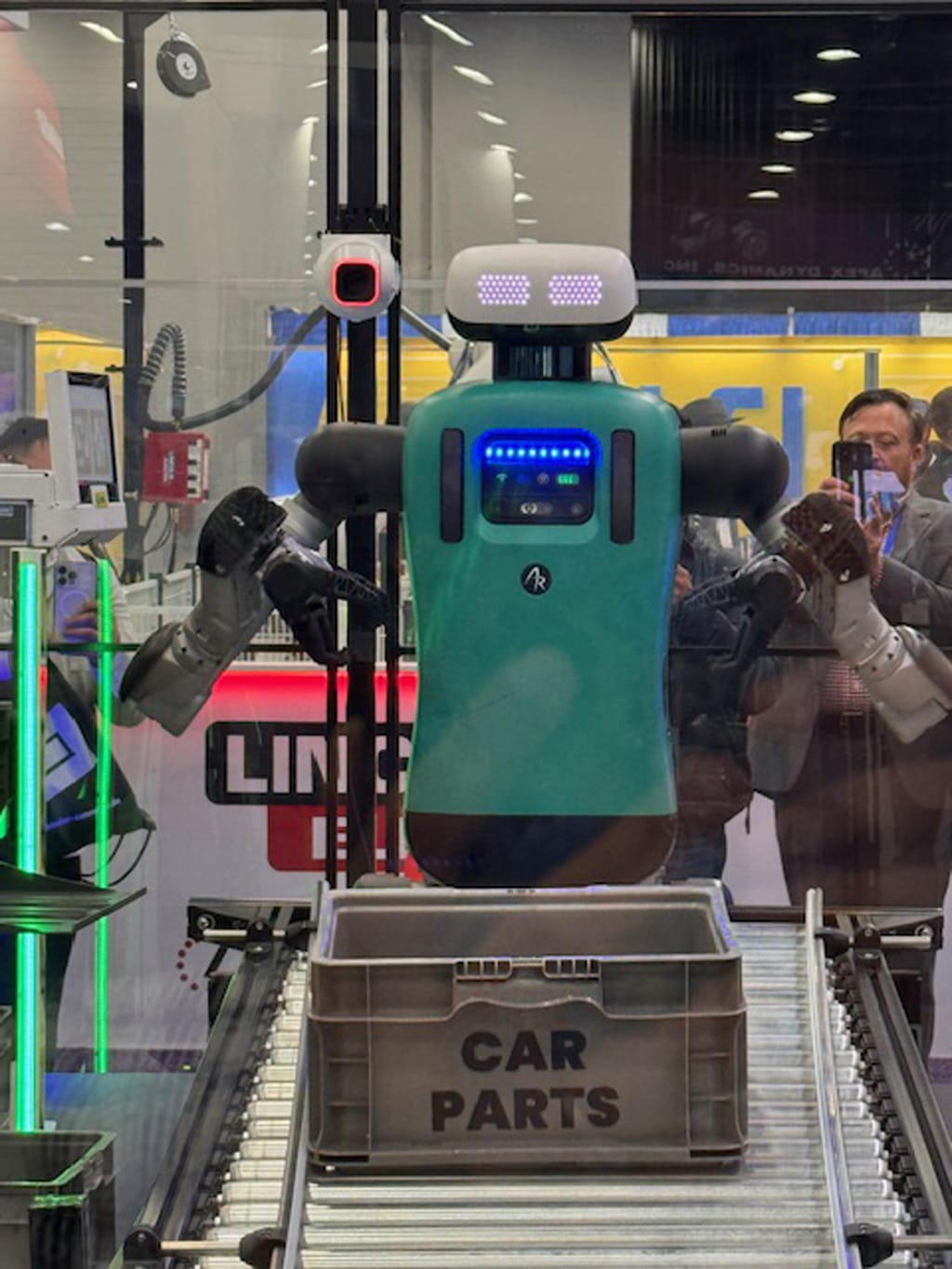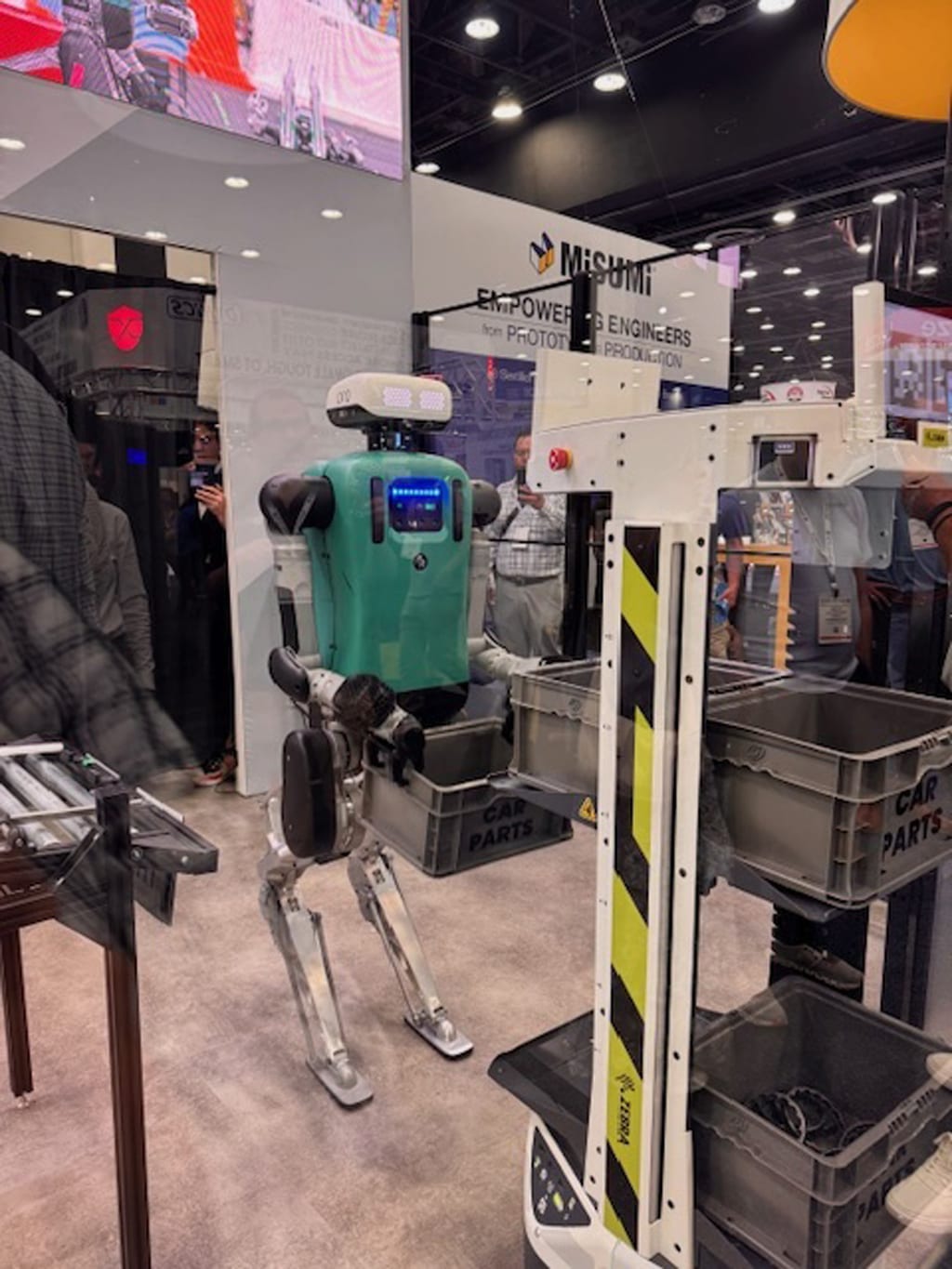
With AI advancements, hardware improvements, and a lot of media attention, humanoid robots are gaining significant momentum in the industry. Safety of these robots, however, is too often an afterthought. These robots pose unique safety challenges due to their mobility and potential instability if power or control is lost.
“We are in a major humanoid hype cycle,” said Melonee Wise, Chief Product Officer, Agility Robotics, who was speaking at a technical session titled “Elevating the Standard for Safety in the Humanoid Robot Market” at Automate this week. “We are silent with regards to safety. We don’t even have the basic — that easy big red button e-stop capability that brings a robot to a stop.”
Safety is a major concern when it comes to humanoid robots — and for good reason. These machines are designed to operate in close proximity to humans, often in dynamic and unpredictable environments. Humanoid robots are often large, heavy, and powerful. Without proper safeguards, they could accidentally injure people through collisions, pinching, or falls. Malfunctions in actuators or sensors could lead to uncontrolled movements, as Wise referenced in a recent video of humanoid robot having a meltdown.
When working together, there is no separation between workers and humanoid robots. Many of the industrial applications for humanoid robots are not confined, Wise added, and until humanoid robots are able to exit the work cell, the industry will be stuck. Agility Robotics’ humanoid robot, Digit, made its first appearance at Automate this week, where it was seen picking and placing totes in a confined area at its booth.

“There are zero ‘cooperatively safe’ humanoid robots,” said Wise. Collaborative safety, according to Wise relates to when a human and robot can touch the same piece at the same time, but cooperative safety is needed when they can be in same place but not touch the same things. “As skills increase over time, humanoid robots will be able to rapidly expand to new markets only if they are cooperatively safe,” she added.
Wise highlighted seven essential challenges that need to be met to free humanoid robots from the work cell. These include safety faults, human-robot interaction, safety zones, safety responses, payload control, safe manipulators, and human detection.
A lot of people might ask: Didn’t the autonomous mobile robots (AMR) industry already solve some of these problems? Why is it different for mobile manipulation robots (MMR), or in other words, humanoid robots? “The answer is because it’s more complex,” said Wise. “First, the robot is actively controlled for stability and second because AMRs use avoiding things, not making contact with things as their primary methodology for ensuring safety. So, they do safe distance monitoring and stop when the person gets too close — but the problem is that the core value of a humanoid is to go out and touch things in the world. If your safety principle is never touch anything, it makes it very hard to go and touch things.”
Standards help ensure that robots from different manufacturers can safely operate in shared environments. There are standards, including ISO 10218, that relate to safety for industrial robots. Existing standards, however, don’t cover safety of humanoid robots, said Wise, adding that the ISO 25785-1, a Type C safety standard, is currently under development to focus on MMRs with actively controlled stability, which includes humanoid robots.
The leadership group of the U.S. delegation working on the ISO 25785-1 standard consists of Federico Vicentini, Boston Dynamics, Kevin Reese – Project Leader, Agility Robotics, and Carole Franklin, Association for Advancing Automation (A3). This Type C safety standard will provide much needed clarity and requirements for humanoid robots with actively controlled stability, ensuring safety as their adoption continues to grow.
This article was written by Chitra Sethi, Editorial Director, SAE Media Group. For more information visit, www.agilityrobotics.com . Automate booth #4244

